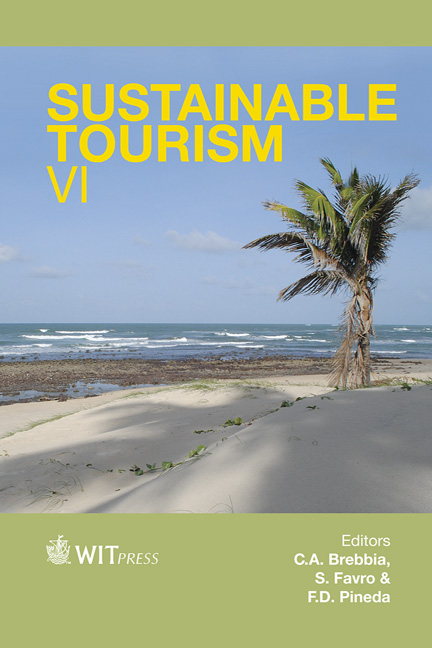Environmental Valuation By The Local Population And Visitors For Zoning A Protected Area
Price
Free (open access)
Transaction
Volume
187
Pages
13
Published
2014
Size
494 kb
Paper DOI
10.2495/ST140131
Copyright
WIT Press
Author(s)
D. G. G. Matos, P. Díaz, D. Ruiz-Labourdette, A. J. Rodríguez, A. Santana, M. F. Schmitz & F. D. Pineda
Abstract
Protected natural areas have traditionally played an important role in tourist destinations. There are over one hundred thousand of these areas throughout the world and to date, their landscapes and biodiversity have constituted the main factor attracting visitors. Although these components have not lost their power to attract, many tourist destinations now highlight the relationship between nature and traditional culture. On one hand, the planning and management of natural areas have fundamentally been based on biophysical aspects; hence, their name. But, on the other, the socioeconomic perspective is of great importance and should be incorporated further into this management. The professional field of the sciences of ‘nature’, which so far has played a major role in these areas, along with the disciplines of social sciences and humanities, faces the challenge of integrating their analysis methods, which can be directly applied to an understanding of the dynamics of present-day tourism. This integration could consider protected areas and territories beyond their physical boundaries. Our team, with experience in the development of environmental analysis models applied to the zoning and subsequent declaration of these areas, has proposed a new procedure for evaluating carrying capacities and tourism potentialities, integrating environmental (landscape), anthropological (local society and visitors) and socioeconomic (living standard and quality of life of local population) perspectives. The research relates this kind of components through multivariate analyses, geo-referenced databases and questionnaires. The pathway of the model is landscape functioning (ecosystem) and its function for society (ecosystem services).
Keywords
carrying capacity, cultural landscape, environmental planning,landscape assessment, local population preferences, natural landscape,protected area, tourism, visitors’ preferences.





